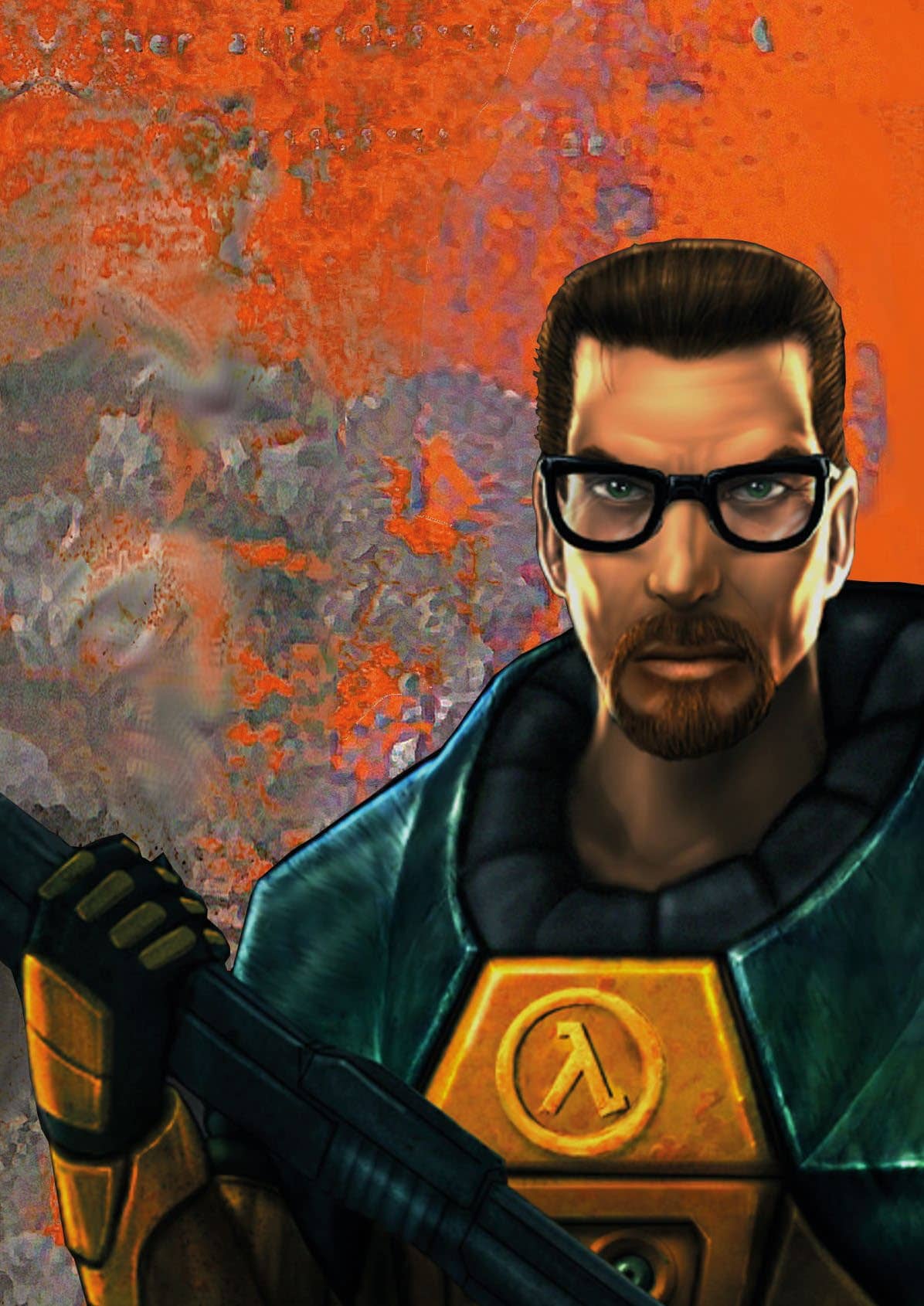
I recently spoke with Vincent Adinolfi, an indie designer working on a game called Heartworm. It’s low-poly 3D survival horror, so when he brought up influences like Silent Hill, Resident Evil, and even Dino Crisis, that was to be expected. But then he mentioned Valve’s classic 1998 FPS. “I’ve tried to take cues from games like Half-Life in the way that Valve uses environment design to naturally develop the narrative,” he says. It’s not the first time I’ve heard developers namecheck Half-Life while making games very different to it. Its effect on the way games tell stories transcends genres. Which is surprising given how few other 1990s shooters even had stories.
John Carmack of id famously said stories are as irrelevant to games as they are to porn, which explains Quake. Sure, adventure games and RPGs might need plots, but what does an FPS have to gain? When Half-Life proved even a game about shooting zombies could be improved with a memorable story, it made the point for everyone. And it did it without cutscenes or a single paragraph of text. Mainly, it did it through Black Mesa.
INTENSIVE SCARES
Half-Life’s writer Marc Laidlaw once explained on his blog that Half-Life was initially planned to be a nonlinear game. That all changed because, as he put it, “All narrative forms of drama, but especially horror, rely on pacing and rhythm. In horror timing is crucial. You have to set up your traps just so, and wait until your victim is precisely in position.”
This story is from the May 2020 edition of PC Gamer.
Start your 7-day Magzter GOLD free trial to access thousands of curated premium stories, and 8,500+ magazines and newspapers.
Already a subscriber ? Sign In
This story is from the May 2020 edition of PC Gamer.
Start your 7-day Magzter GOLD free trial to access thousands of curated premium stories, and 8,500+ magazines and newspapers.
Already a subscriber? Sign In

JET SET RADIO
A vibrant Tokyo-like city with an anti-establishment attitude.

BLUE DAWN
INTEL graphics cards have become a genuine contender. How, and why?

WIRELESS GAMING MICE
I challenge you to spot the difference between these wireless rodents and their wired counterparts.

FOILED AGAIN
EN GARDE! is a brief yet riotous piece of swashbuckling nostalgia

PURE MAGIC
BALDUR'S GATE III is a dream RPG that was worth the 23-year wait

THE BEST MECH GAMES ON PC
From anime mecha to rusty 100-ton war machines, the best mech games for giant robot lovers

MECH MY DAY
MECHWARRIOR 5: CLANS is bringing a narrative focus and intricate, handcrafted missions back to the storied series.

HOMEWORLD 3
The space RTS aims to please with its War Games mode

LORDS OF THE FALLEN
World-hopping glow-up

WARHAMMER 40K: SPACE MARINE 2
Chaos is winning right now, I fear